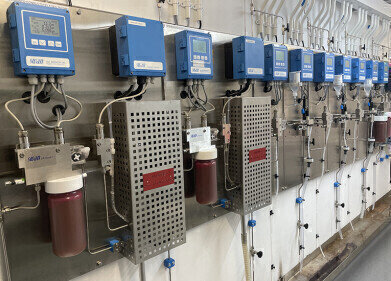Water Quality Monitoring
More monitoring needed to tackle toxification of crucial Asian glacier, say scientists
Oct 14 2023
In a world grappling with climate change, the "Asian Water Tower" - the Tibetan Plateau and its adjoining mountainous regions - are at the forefront of concern. This plateau is a vital factor in the lives of around 2 billion people, nearly a quarter of the global population. The importance of the Asian Water Tower cannot be overstated; it births ten of Asia's principal rivers such as the Ganges, Indus, Yangtze, and Yellow. Numerous Asian nations, including Afghanistan, Bangladesh, China, India, and Nepal, are dependent on this water for drinking, agriculture, and myriad other economic activities – for many people in this area, it is the foundation of their livelihoods. To pluck one piece of work from a veritable library of studies, research from Michigan State University details how regional temperature hikes have caused glaciers and snowpacks to melt at an alarming rate, leading to an unparalleled reduction in water accessibility. By century-end, according to this model, a staggering 84% to 97% of High Mountain Asia and the Tibetan Plateau will face significant water storage deficits. However, though alarm bells have been ringing about its rapid depletion for many years, researchers now warning that not only are we heading towards an Asia without this plateau but the water it produces in the meantime may rapidly deteriorate in quality, too.
Recently, a group of researchers from the Chinese Academy of Sciences published their findings in Nature, detailing an unsettling hypothesis. As climate change accelerates the melt of glaciers in the region, greater quantities of meltwater produced in contracted time periods increase the force and speed of flows, leading to greater rock and soil erosion. Interestingly, a prior study in Science highlighted that under extreme climate change scenarios as defined by the IPCC, the glacier's total sediment flux could more than double by 2050. As a result, glacial outflows carry greater quantities of sediments downstream and introduce contaminants like arsenic, calcium and magnesium into drinking water as these elements have become suspended in speedier outflows upstream through the erosion of minerals containing them. While the focus has traditionally been on water quantity, it's now evident that water quality assessments are equally paramount. These assessments are vital to safeguarding both local and downstream ecosystems and livelihoods as well as crop yield and public health.
Yet, despite the glaring risks, scientists lament a gap in water quality monitoring at the Tibetan Plateau. While there are a great number of monitoring sites in the region, almost all monitor hydrology as opposed to water quality. Many researchers have called for a research network that accumulates and preserves data on groundwater and surface water quality, glacier run-off geochemistry, permafrost degradation, and pollutant release across borders.
In light of all of this, then, it's clear that the relationship of researchers to the Asian Water Tower is at a crucial juncture. With the prospect that further warming may convert one of the world’s single most important water sources into what one report called ‘toxic mud’, getting a clear picture of the processes causing this transformation could not be a more urgent concern, necessitating collaborative action between all countries both upstream and downstream of the Tibetan Plateau. Even more so than previously thought, time is running out to preserve one of our most crucial ecosystems.
Digital Edition
AET 28.2 April/May 2024
May 2024
Business News - Teledyne Marine expands with the acquisition of Valeport - Signal partners with gas analysis experts in Korea Air Monitoring - Continuous Fine Particulate Emission Monitor...
View all digital editions
Events
Jul 30 2024 Jakarta, Indonesia
China Energy Summit & Exhibition
Jul 31 2024 Beijing, China
2024 Beijing International Coal & Mining Exhibition
Aug 07 2024 Beijing, China
IWA World Water Congress & Exhibition
Aug 11 2024 Toronto, Canada
Aug 25 2024 Stockholm, Sweden and online









.jpg)








